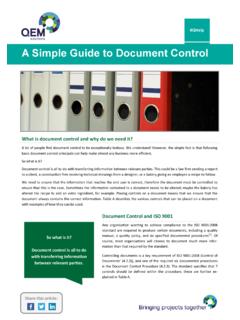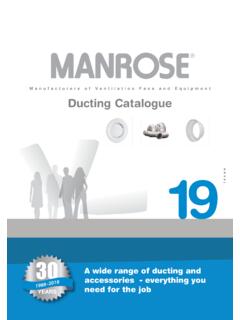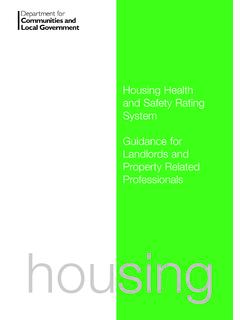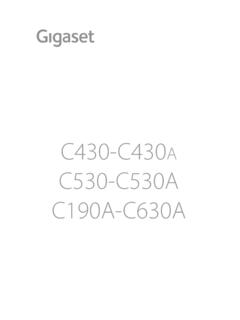Transcription of A Simple Guide to Concrete Cube Testing - QEM Solutions
1 Share this article: A Simple Guide to Concrete Cube Testing Concrete is one of the most widely used building materials in the world, yet people still find it difficult to take samples correctly and manage the Testing & certification process. Failure to do this can result in the need to spend even more money undertaking complicated calculations to prove compliance with British Standards or even drilling and crushing cores to prove design and reliability! Why waste so much time and money when it s so easy!? What we have here is a sure-fire way of doing it properly and getting it right first time. Enjoy! Why do we do it?
2 Concrete is used mostly for structural purposes such as foundations, columns, beams and floors and therefore must be capable in taking the loads that will be applied (unless you re just after a large paperweight!). One of the methods of checking its fit for purpose is to carry out a Concrete cube test which measures the compressible cube strength of the Concrete and relates directly to the required design strength specified by the designer. Also is it is usually a minimum requirement from the client to provide evidence of cube test results to ensure compliance with the designers requirements. First Things First - Safety!
3 Make sure all people involved are trained and competent to carry out the task at hand and make sure you read and understand the risk assessment and method statement, because if they re not, it ll only come back to bite you later. If you re not sure how to do it, ASK! Wear Personal Protective Equipment (PPE) as prescribed by the COSHH Assessments. Concrete is hazardous to your health so check with your employer what is required to undertake the task. Taking a Sample (Sampling) This is what you ll need: #QHelp A bucket or wheel barrow Wooden board / Polythene sheet or similar Cube moulds Tamping rod or vibrating poker Slump cone Pen or marker to identify the samples Mound releasing agent and brush Scoop Trowel/ Concrete float Tape Measure/Steel Rule Damp cloth Concrete curing tank Share this article: Never take a sample from the first or last section of the pour, it won t be a true representation of the batch.
4 The Concrete is usually sampled after the 1st metre of Concrete has been poured to ensure a good sample is taken. As said in BS EN 12350-1, take a few samples throughout the pour for the best representation of the batch and make sure you take 150% of what you think you ll need. The sample is taken and used to make the cubes. The sample must be a good cohesive mix, it may require some mixing once taken from the Concrete batch to be suitable for a slump test and cubes. EN 206-1: 2000 Slump Class Slump in mm S1 10 - 40 S2 50 - 90 S3 100 - 150 S4 160 - 210 S5 220 Site Testing - Slump Test Always do your slump test before making your cubes to ensure the Concrete is usable.
5 If the slump test fails to meet the range limit as dictated by the British Standard (shown in the table below) then the load should be rejected. Place the damp slump cone on a flat, hard surface. Fill the cone with the Concrete sample in three stages. Once each stage is filled tamp the mix with the tamping rod 25 times. After the third tamping the excess Concrete shall be struck off flush to the top of the cone. Lift the mould carefully upwards, to minimise disturbance of the Concrete inside. The Concrete will slump. Place the cone next to the Concrete slump and measure the difference in height in mm between the top of the cone and the top of the highest point of the Concrete .
6 EN 206-1:2000 identifies five classes of slump identified in the table below. Also note what the slump looks like; true (similar shape to the cone), shear (the slump has sheared in some way), collapse (no resemblance to the original cone). The slump is normally specified by the designer or may be a specific mix to aid in placement, a high slump for a pump mix. Record the slump on the appropriate paperwork. Now for the Usually a minimum of 3 cubes are taken from each sample, so make sure you taken enough from the pour before it finishes. Do check the specification you are working to, as sometimes the quantity of cubes you have to take may vary.
7 The frequency of sampling should be identified in client specifications or by the designer. This could be per batch / load or even per volume poured. Check before you start. Cube moulds are usually 150mm x 150mm x 15 mm (or 100mm x100mm x100mm) and can be made from steel or polyurethane. The cube moulds must be manufactured to the specifications / standards of the relevant body, in the UK it is the British Standards Institute to this specification BS EN 12390-1:2000. Before the Concrete is scooped into the moulds the moulds must be lightly coated in a mould release agent. This ensures that the Concrete does not stick to the mould and makes it easier to remove the cube.
8 When using a 150mm mould, the Concrete sample is scooped into the mould in 3 equal layers (50mm) and compacted between each layer. There are various methods to compact the Concrete into the moulds. Hand Compaction - Using a compacting rod / bar to BS EN 12390-2:2009. When using a 150mm mould, each layer compacted is tampered using a certified compacting rod /bar, 35 tamps per layer is required. Once the 3 layers have been tampered, tap the side of the mould with a hammer. Tampering and tapping removes trapped air in the Concrete and allows compaction of the sample. Once complete, the Concrete is levelled off using a Concrete float or trowel to give a smooth surface flush with the top of the mould.
9 Mechanical Compaction - internal poker vibrator / vibrating table to BS EN 12390-2:2009. Each layer is filled and vibrated till no more bubbles are on the surface of the layer, this is repeated for the 3 layers. It is very important not to over vibrate the layers as it may lead to segregation / disruption of the Concrete mix. Share this article: Labelling It s very important to uniquely identify each of the cubes (and moulds) and to record where they have come from. Usually companies will have a process of labelling or tracking the cubes so make sure you ask first and record it properly. Storage The cubes should be covered with a damp cloth and a plastic sheet and stored in dry environment at a temperature range of 20 5 degrees.
10 The Concrete cubes are removed from the moulds a minimum 16 hours later to a maximum 72 hours, usually this done after 24 hours. Make sure the cube ID is transferred to the cube before placing into a curing tank. The curing tank needs to operate at a temperature between 20 2 degrees and provides a moist environment that allows the cubes to hydrate properly. Ensure the cubes are fully submersed at all times and record the tank water temperature at least daily. Cube Testing The cubes are generally tested at 7 & 28 days unless specific early tests are required, for example to remove a Concrete shutter safely prior to 7 days.







